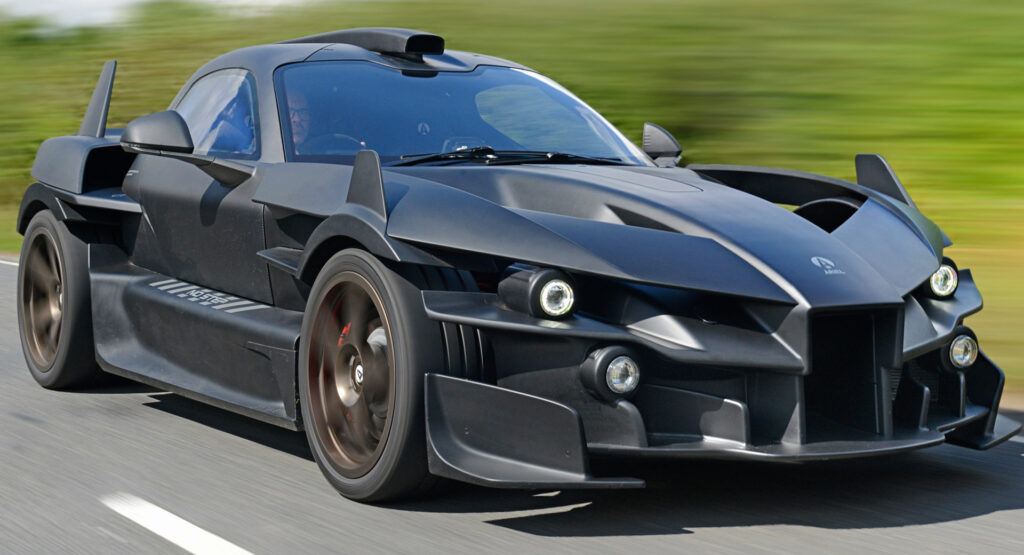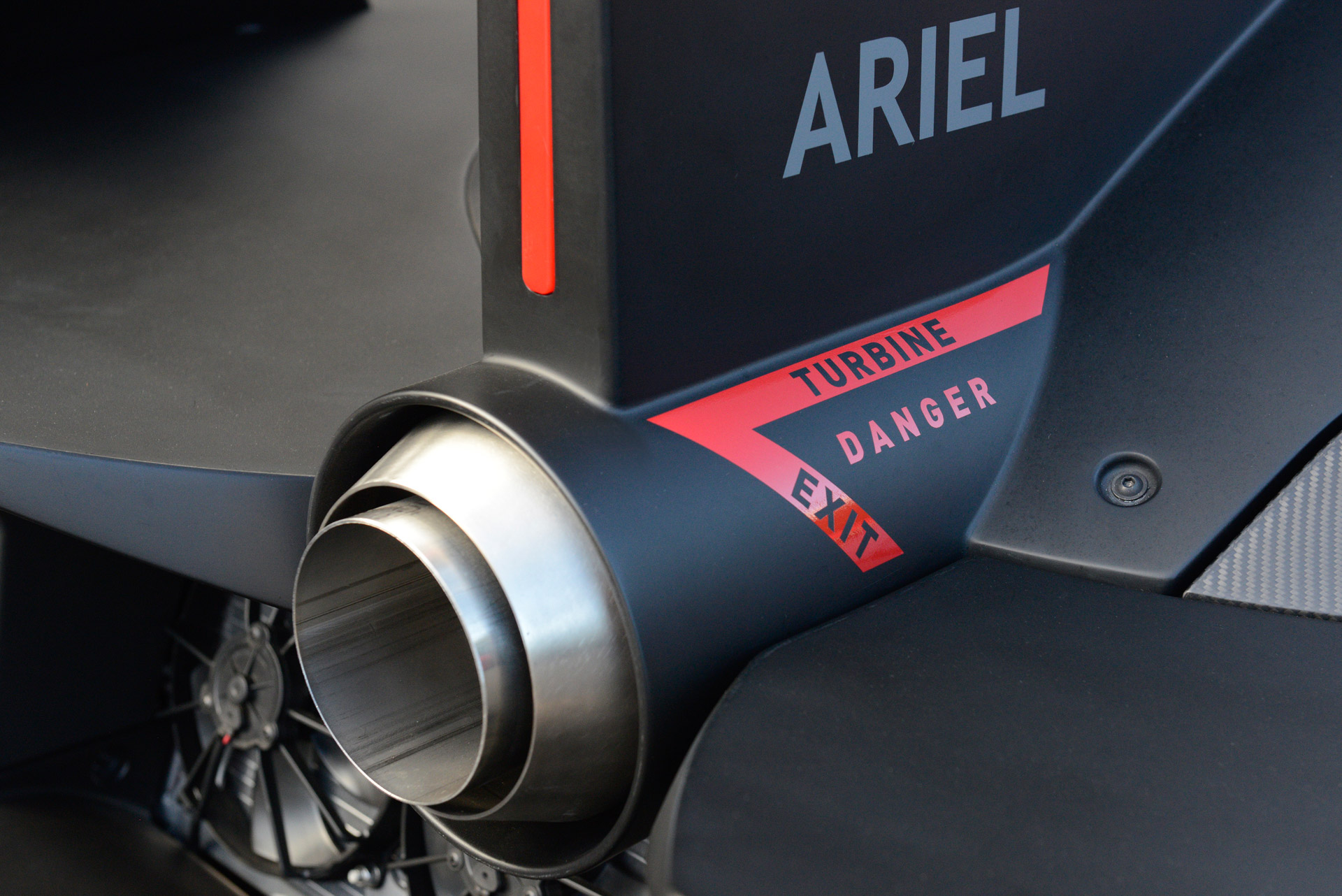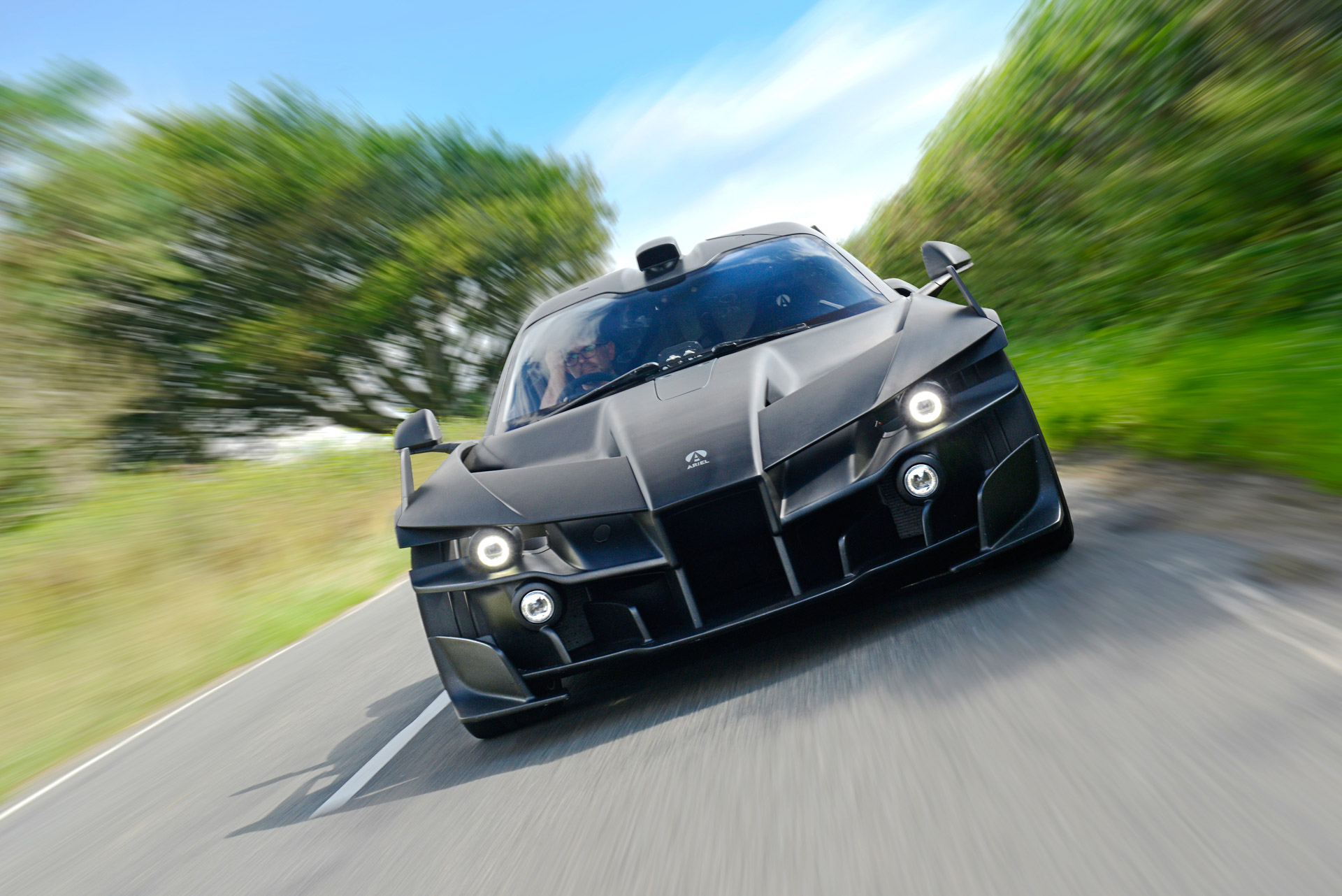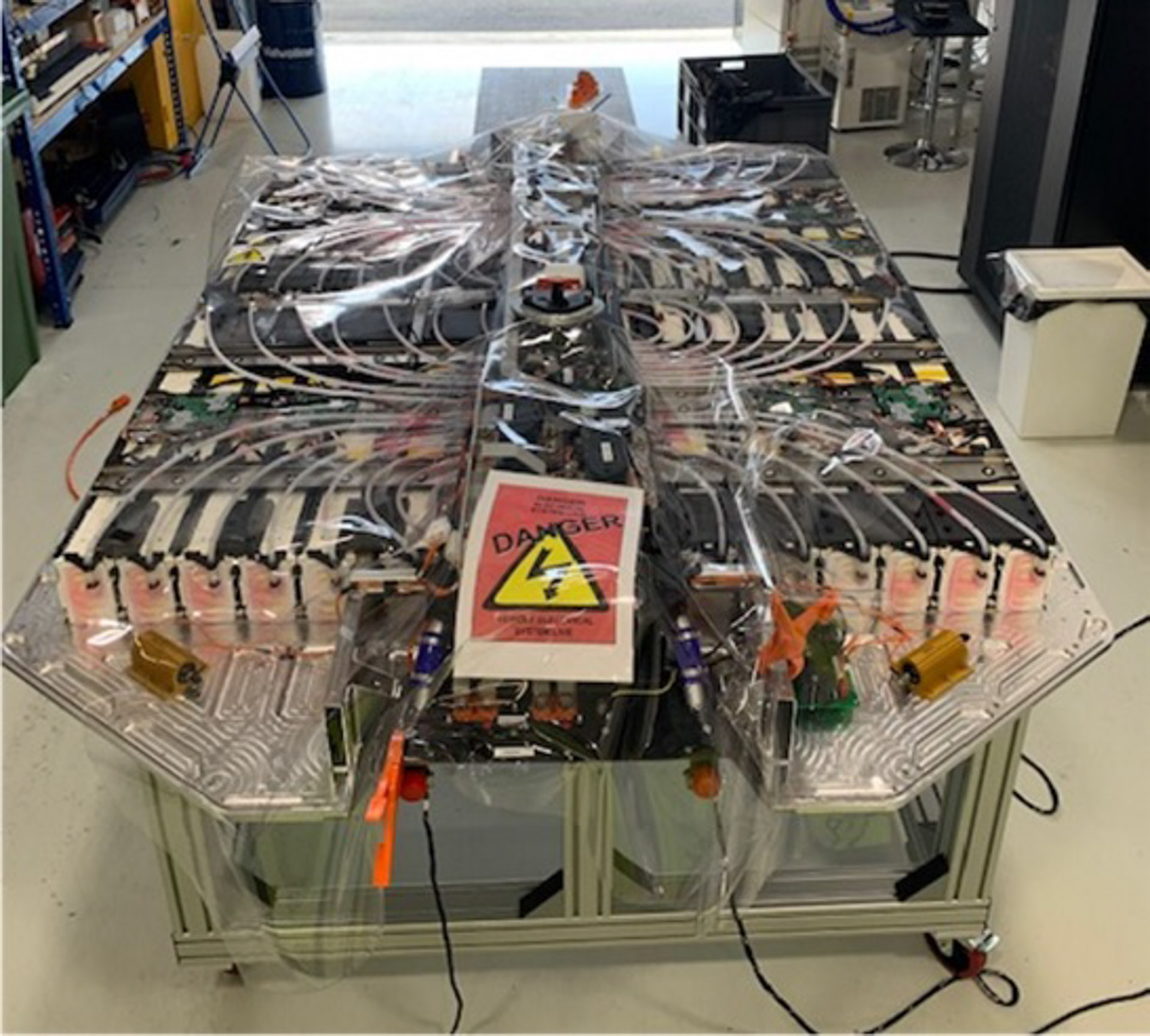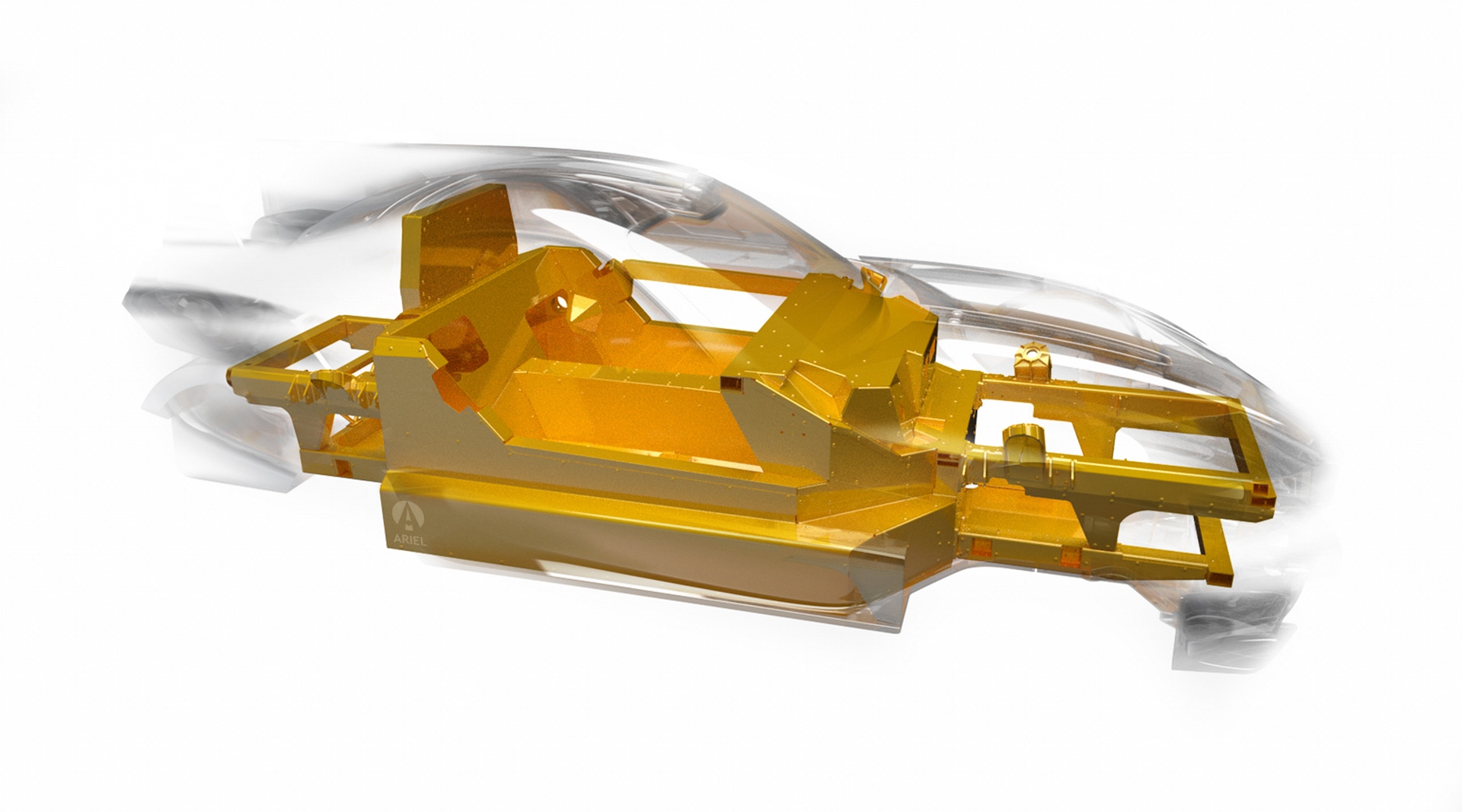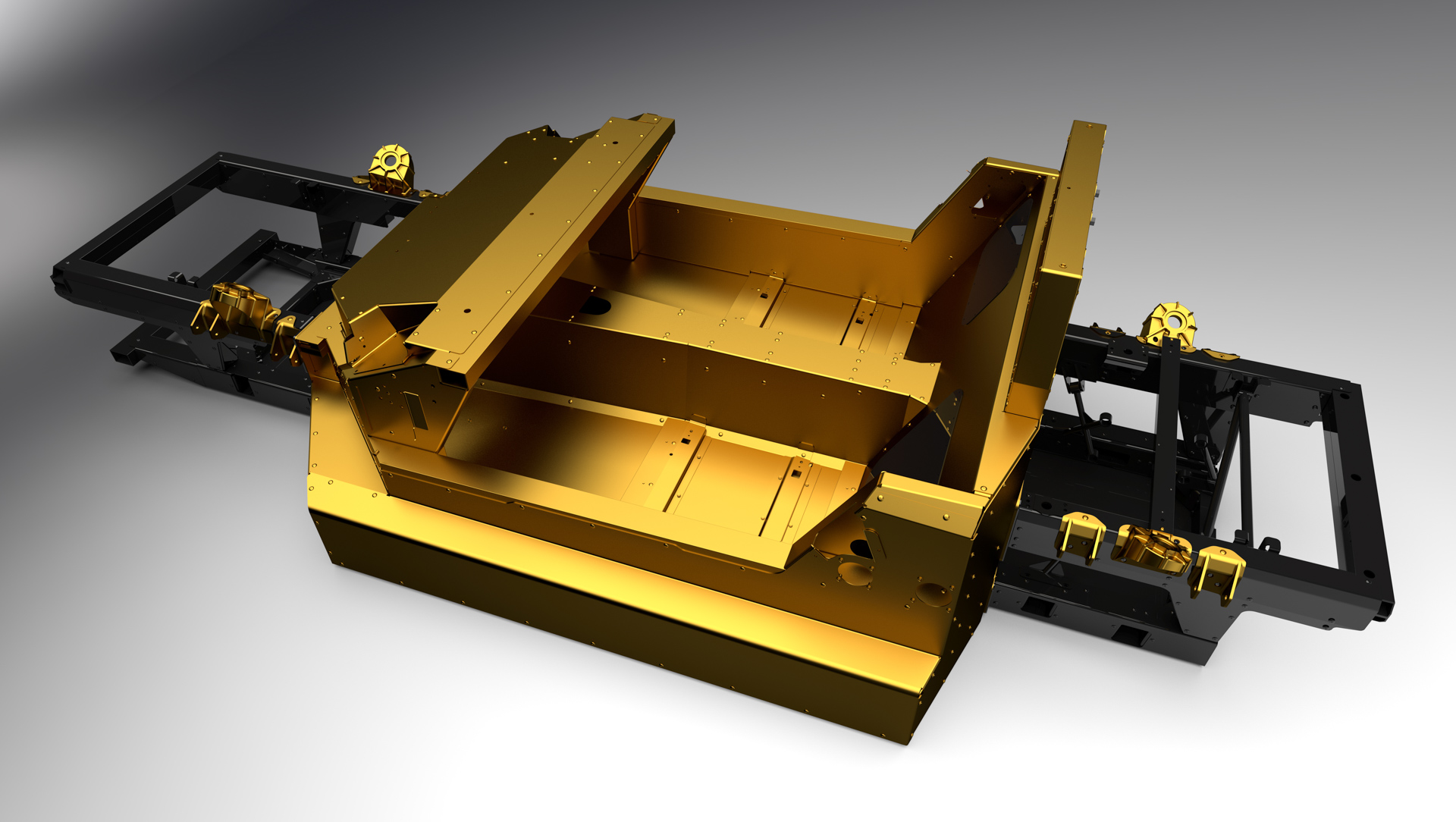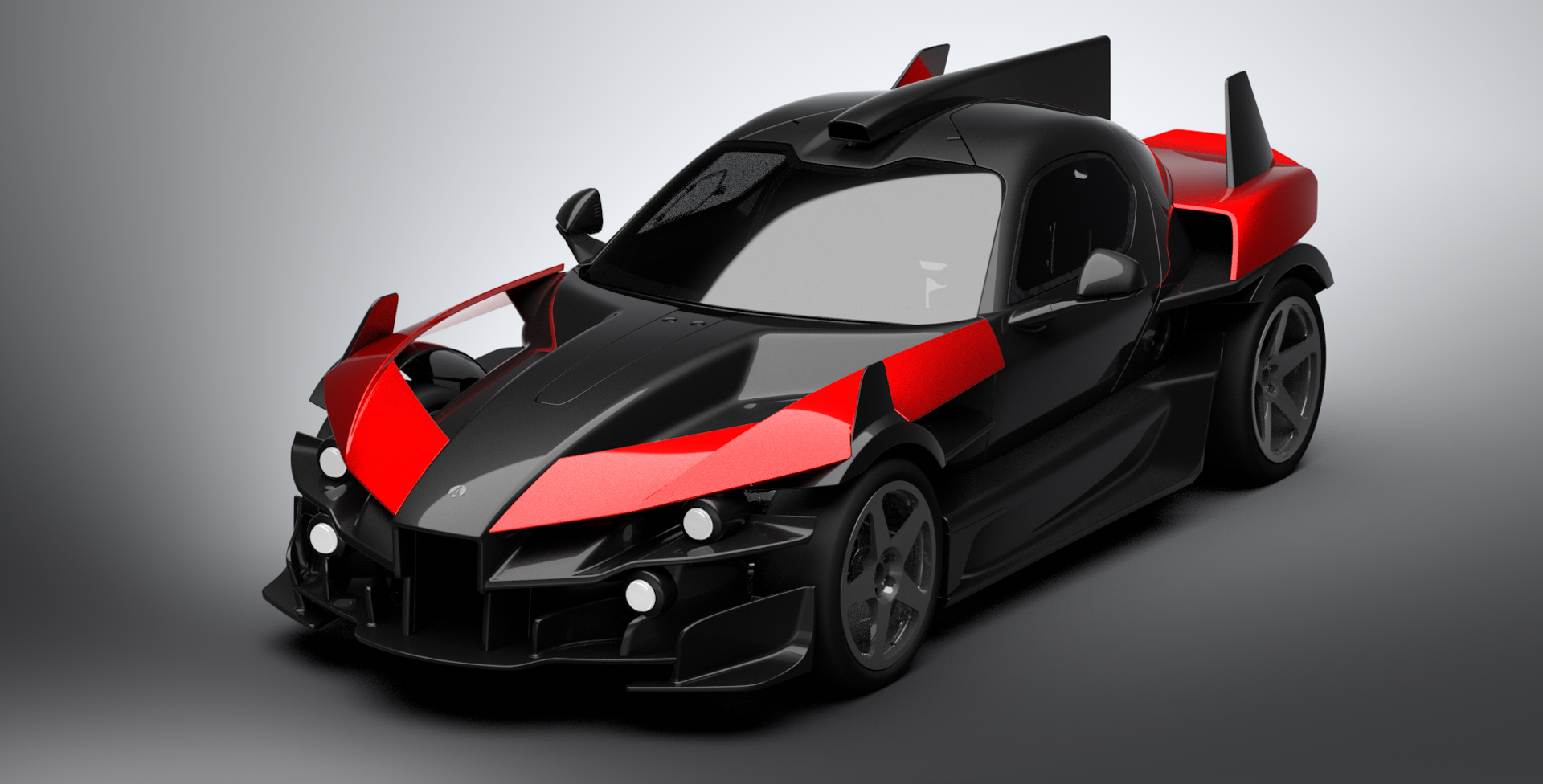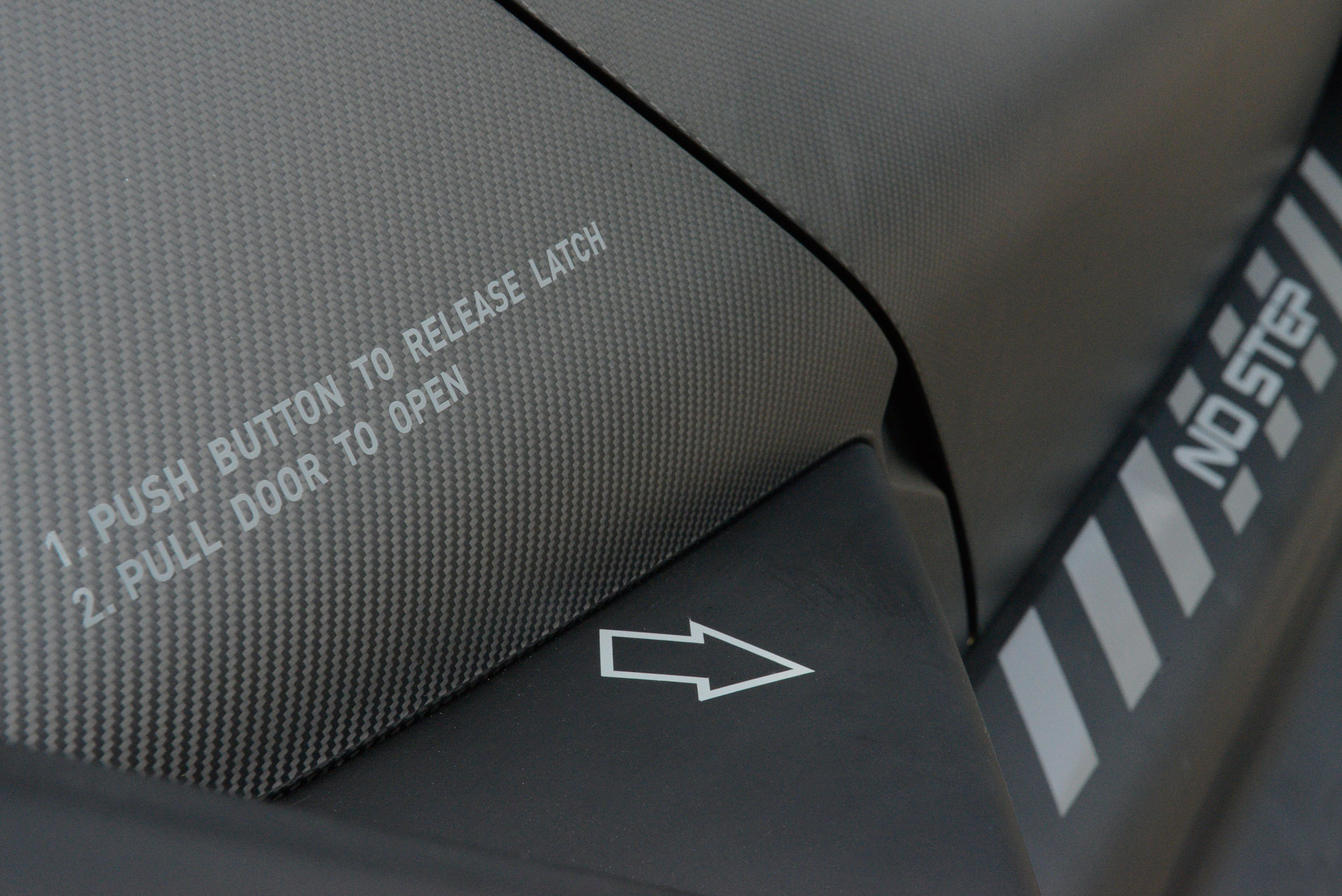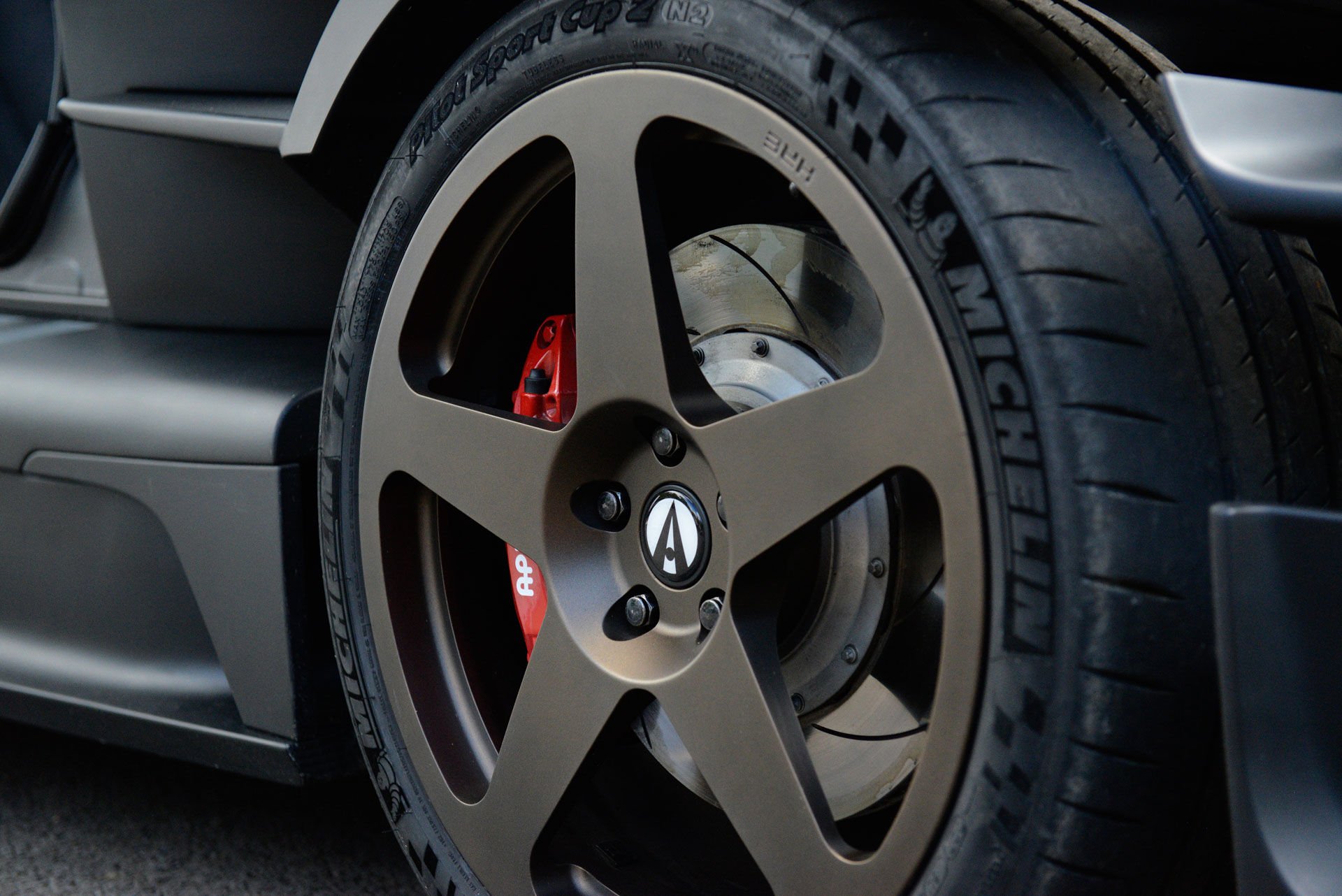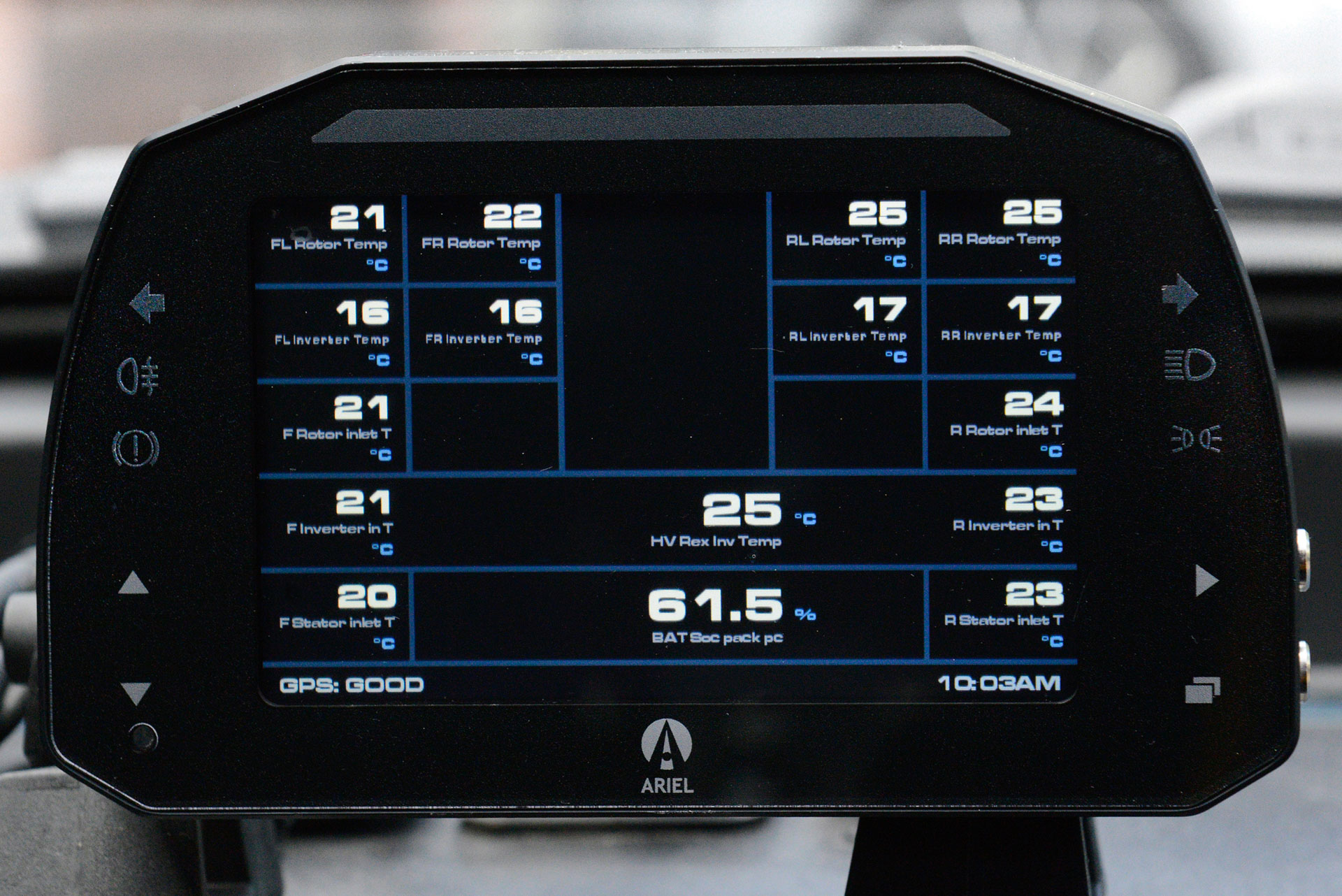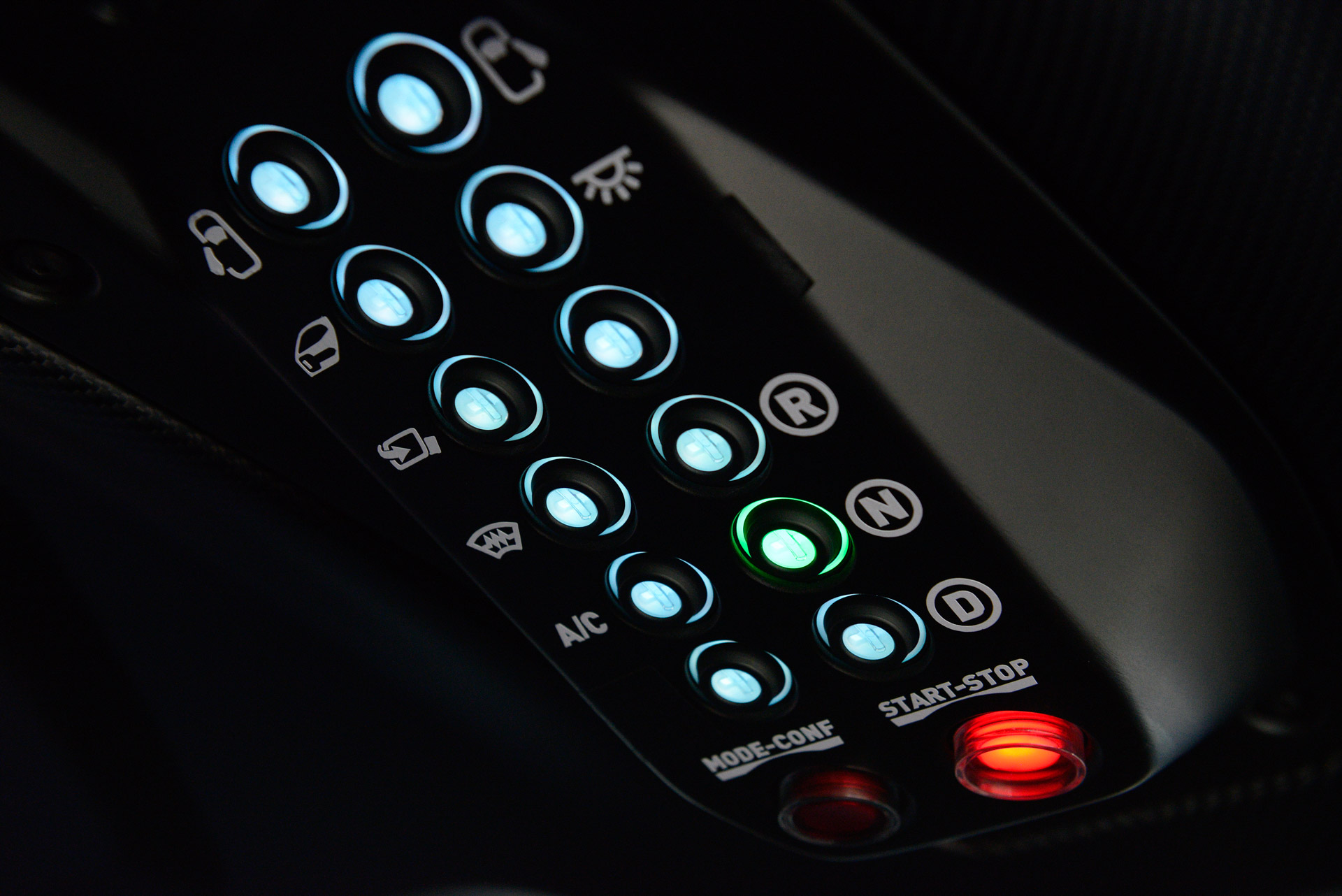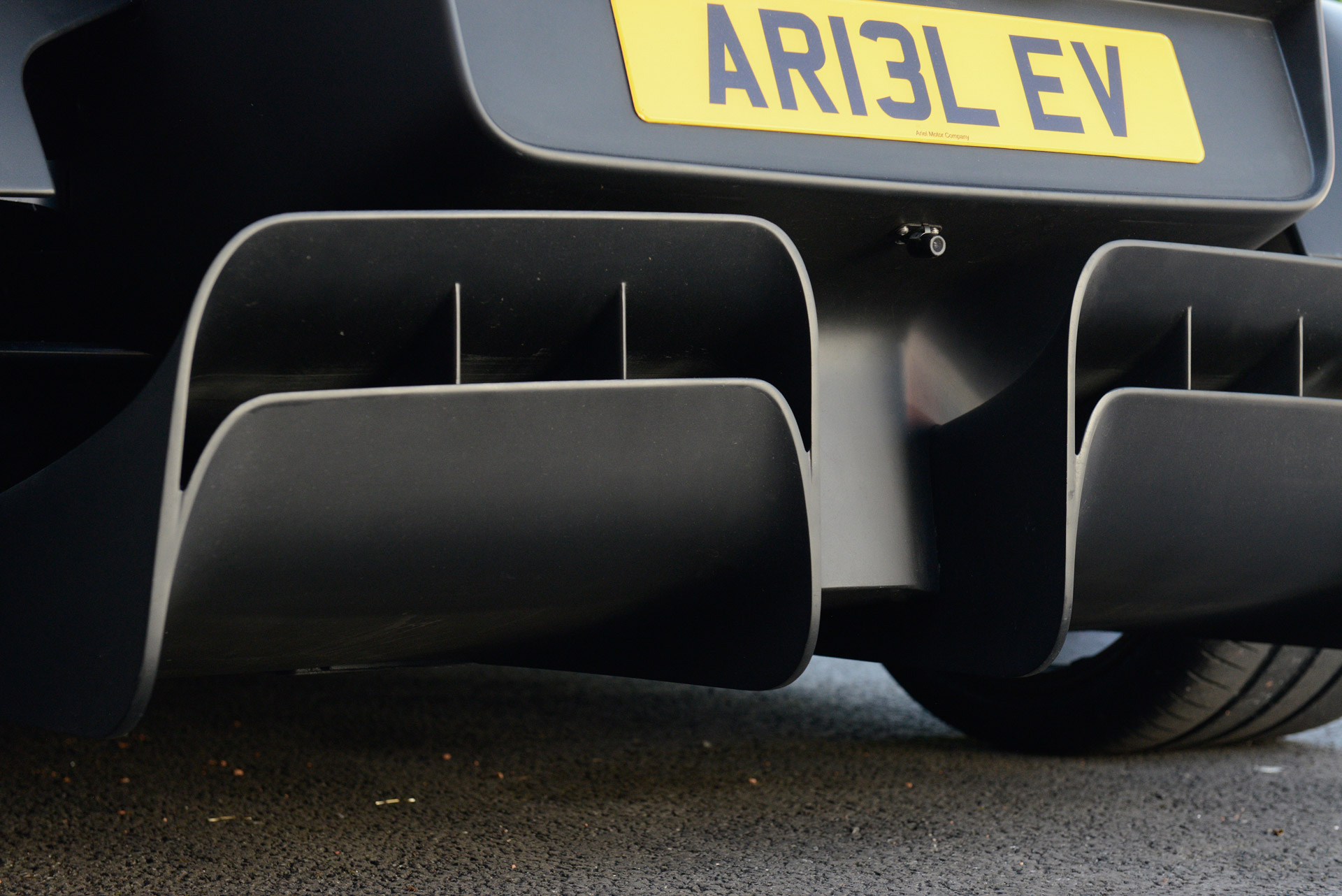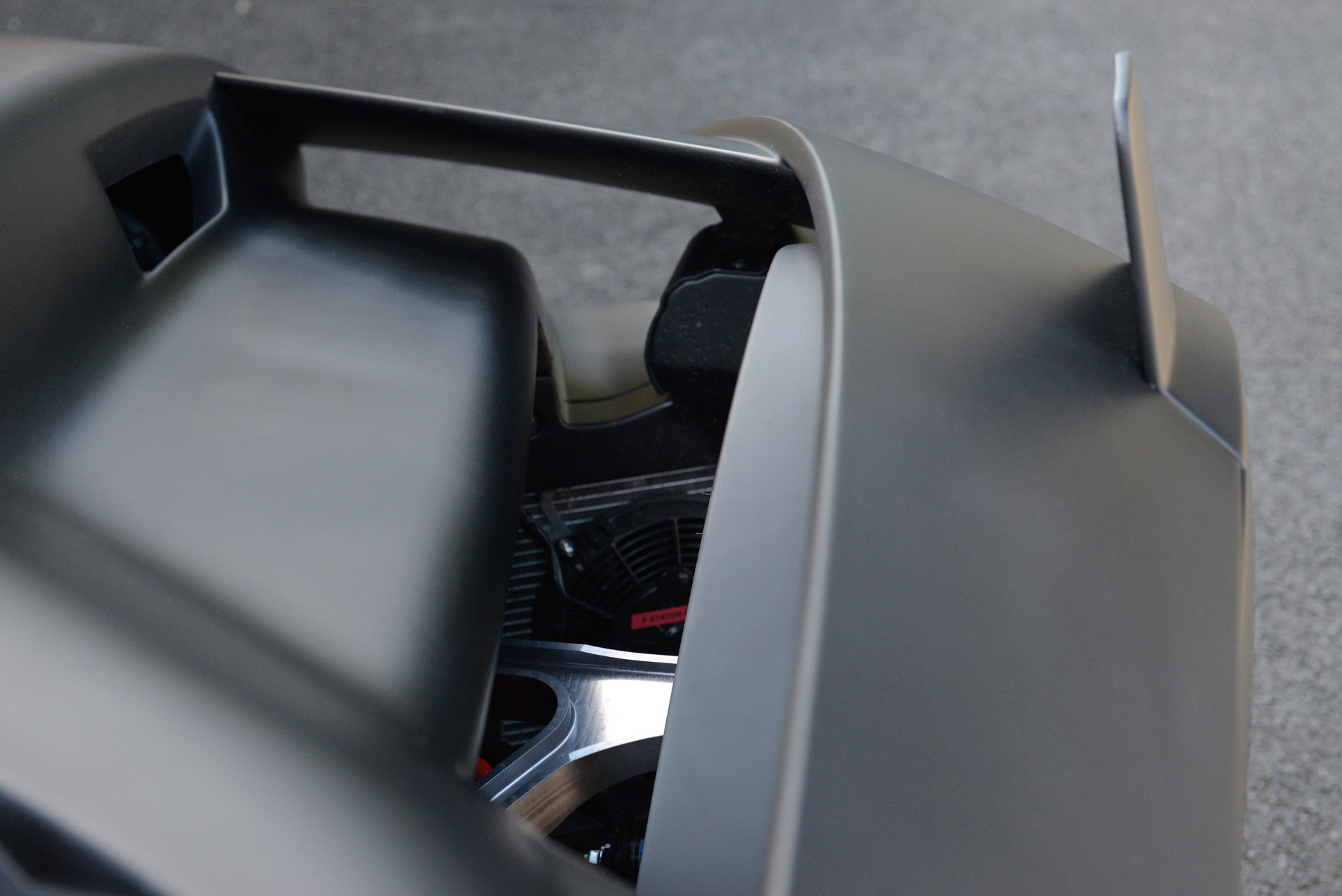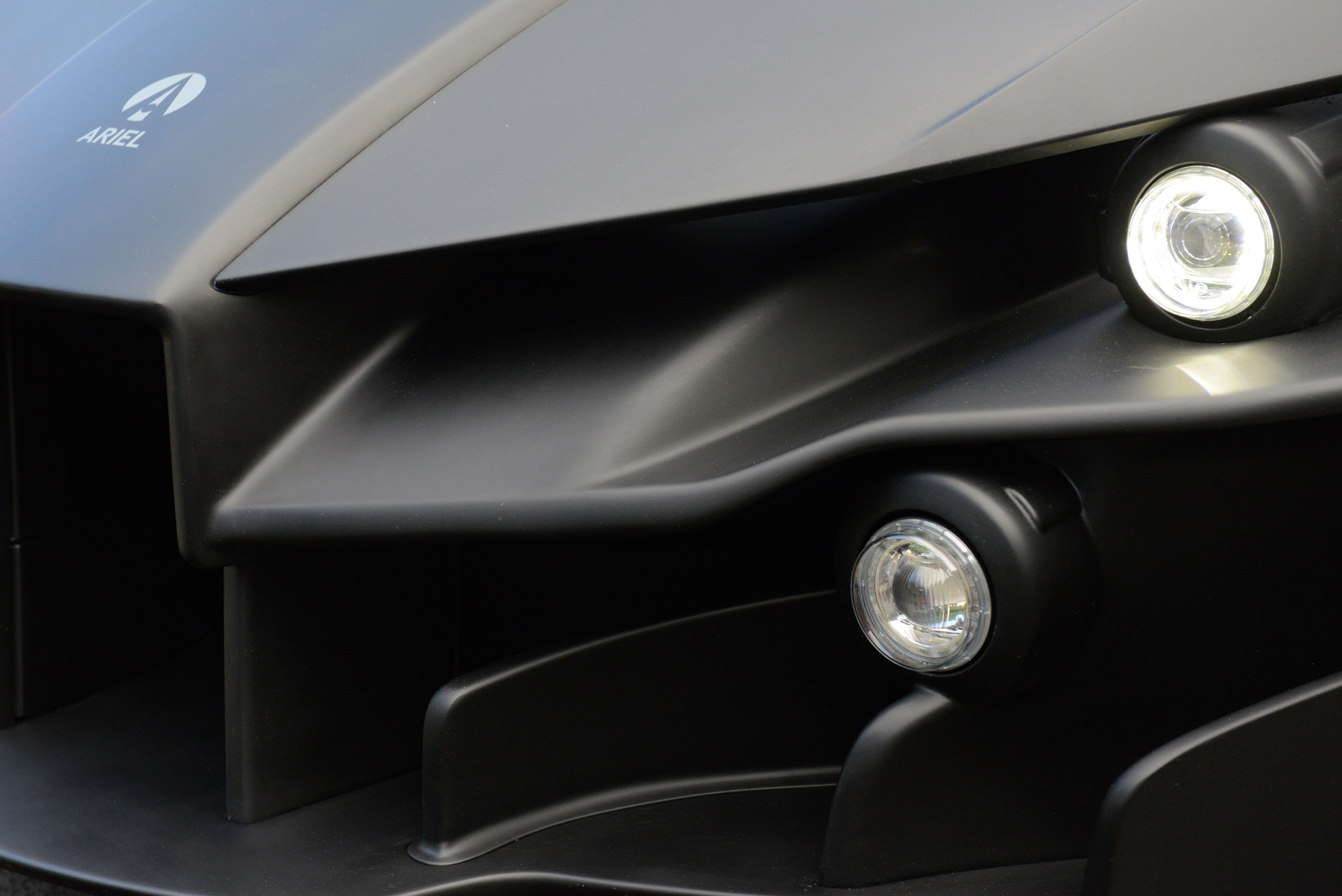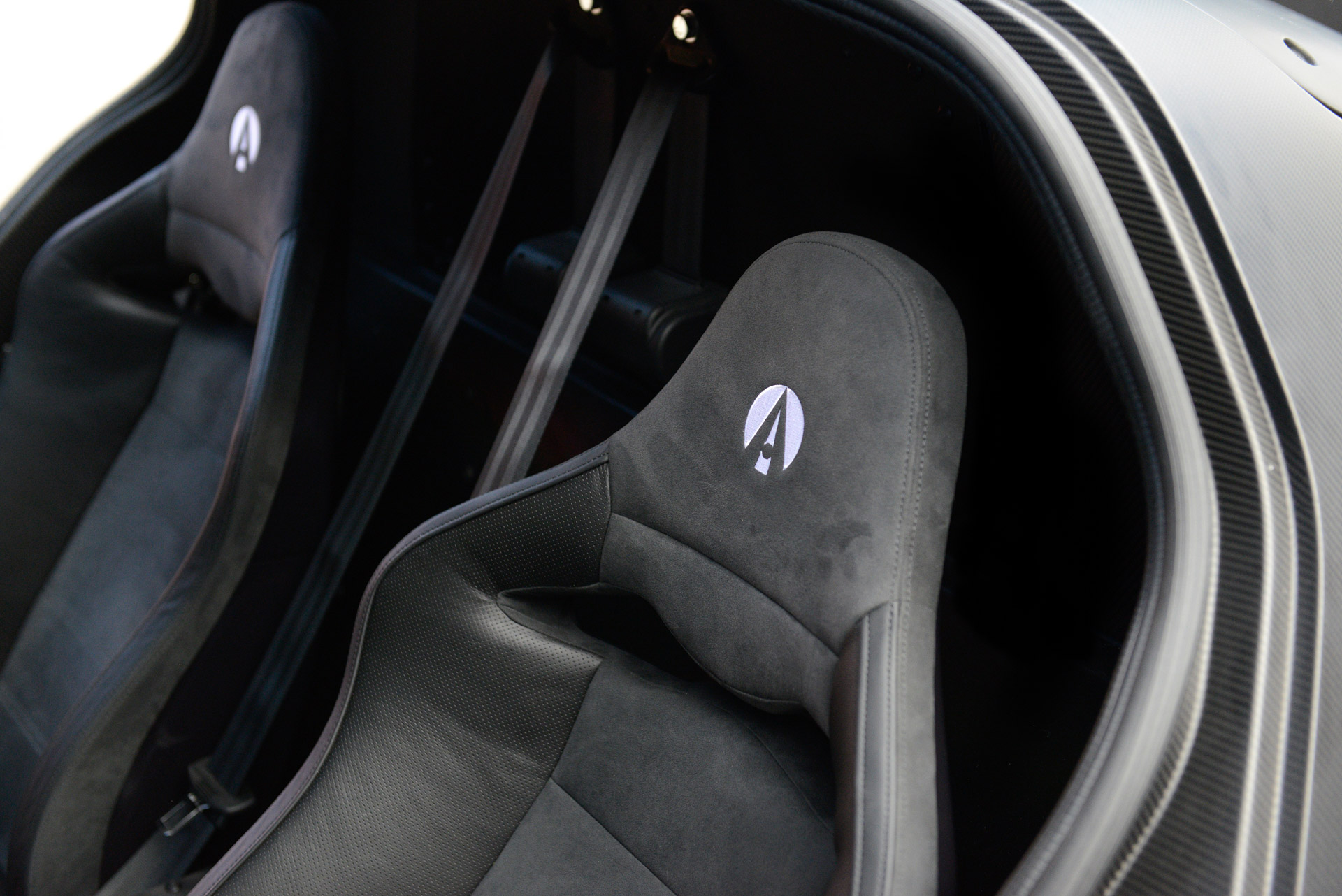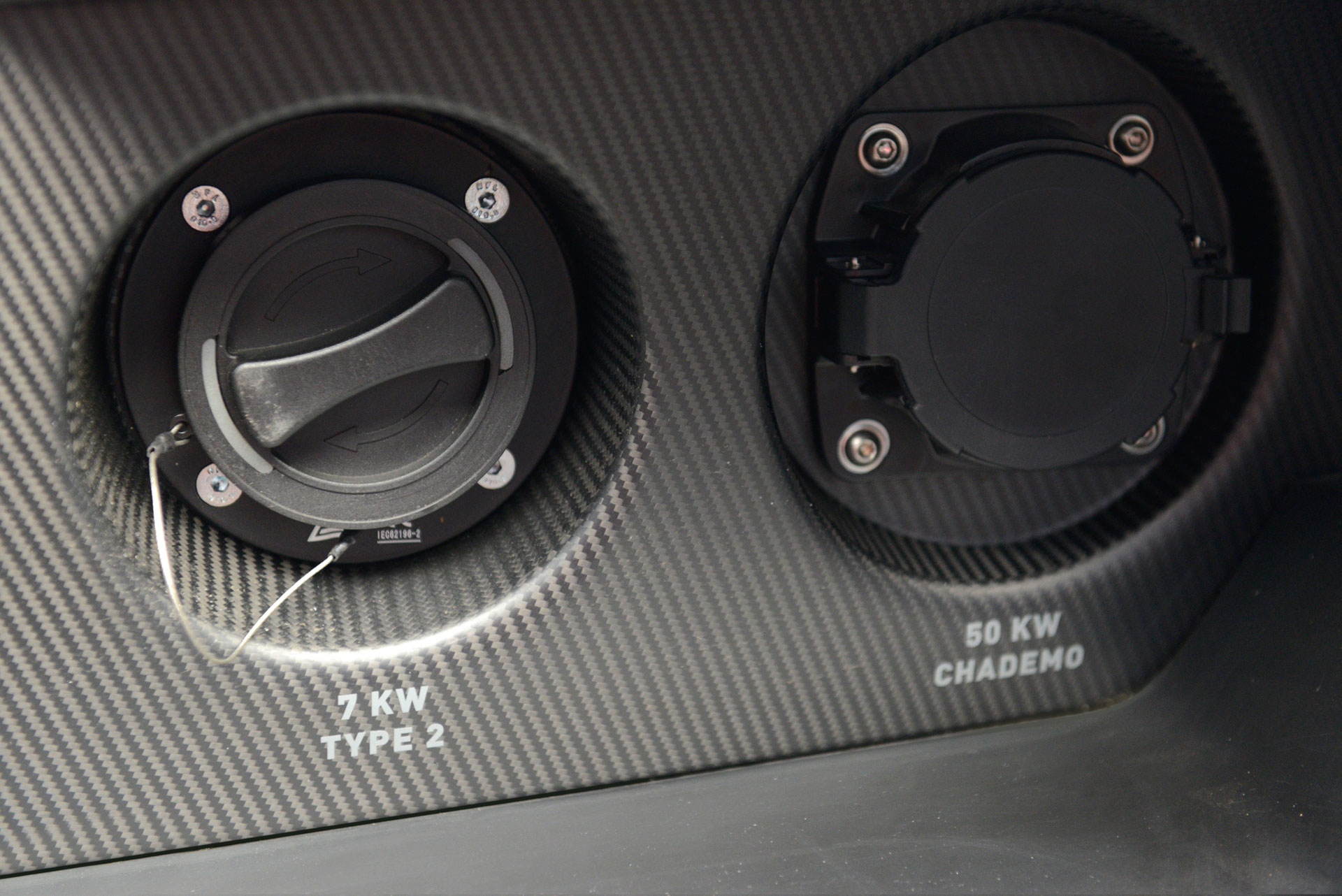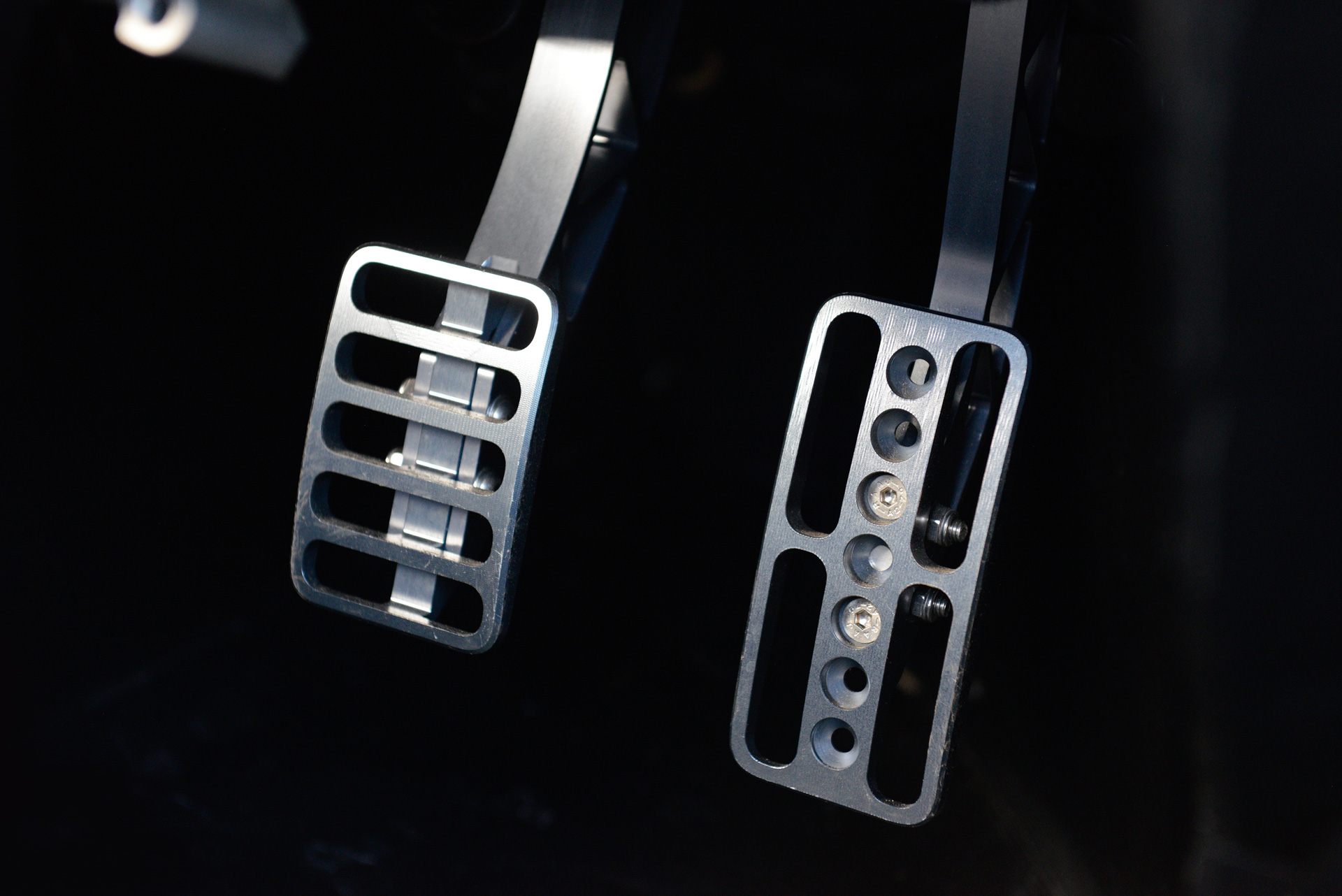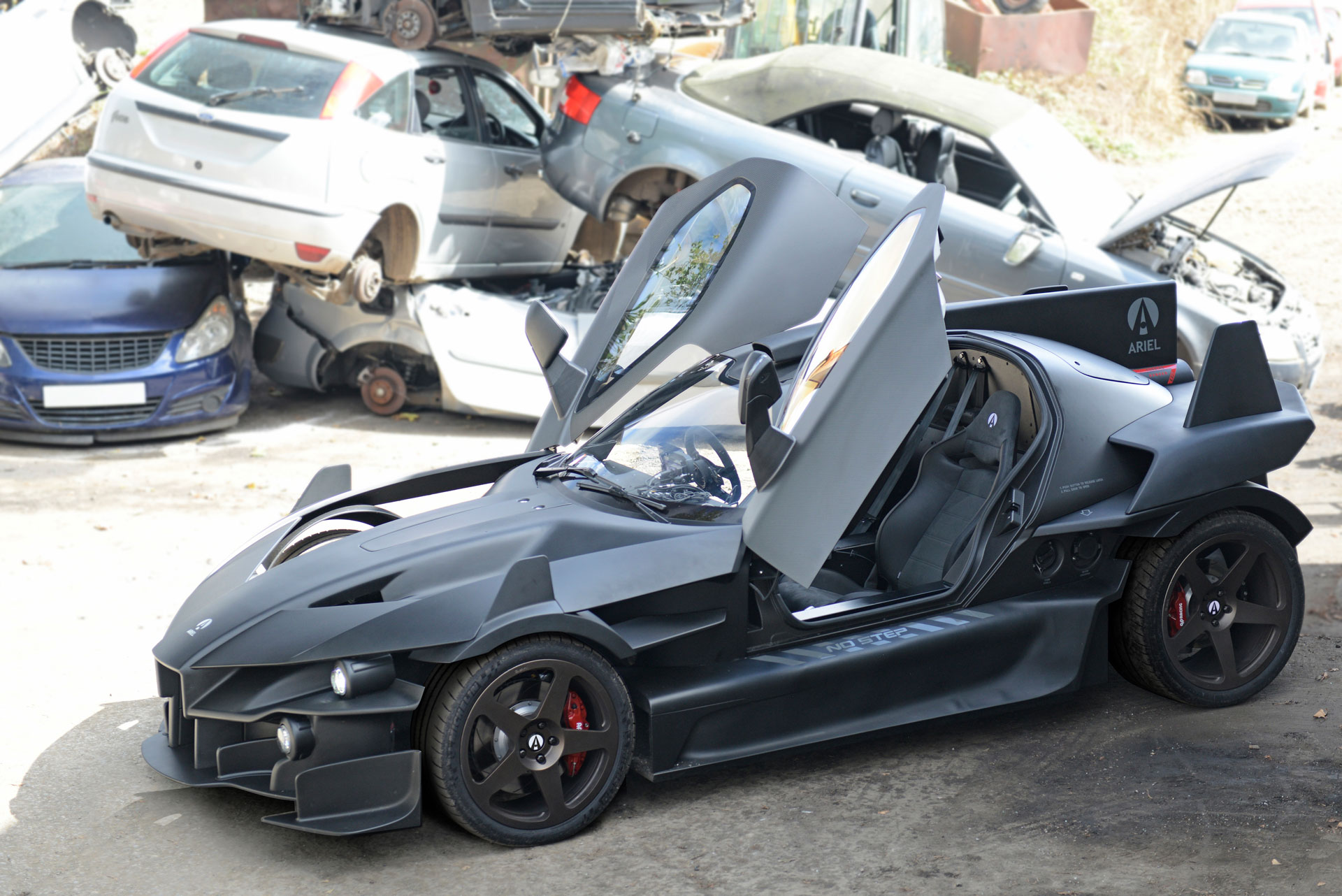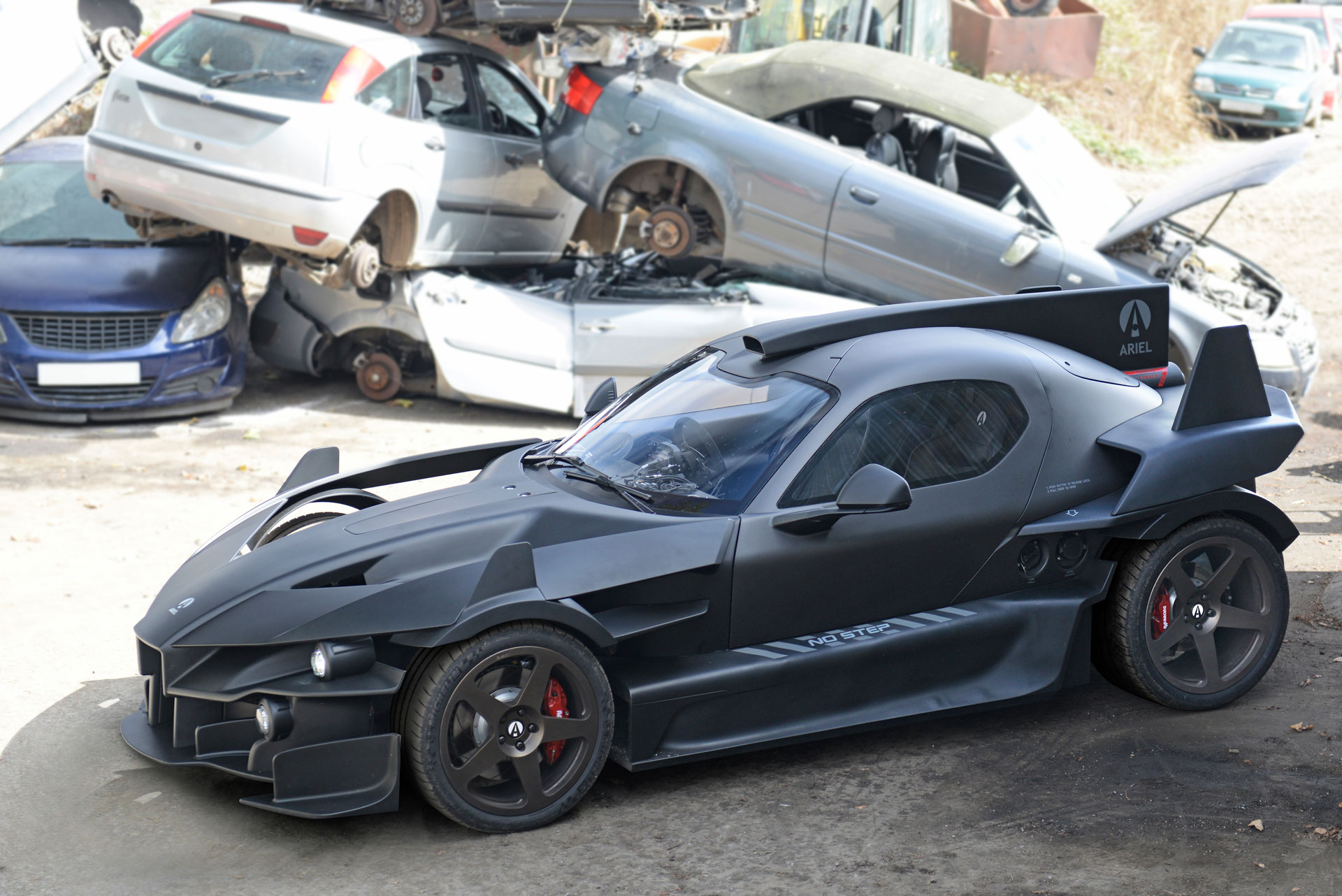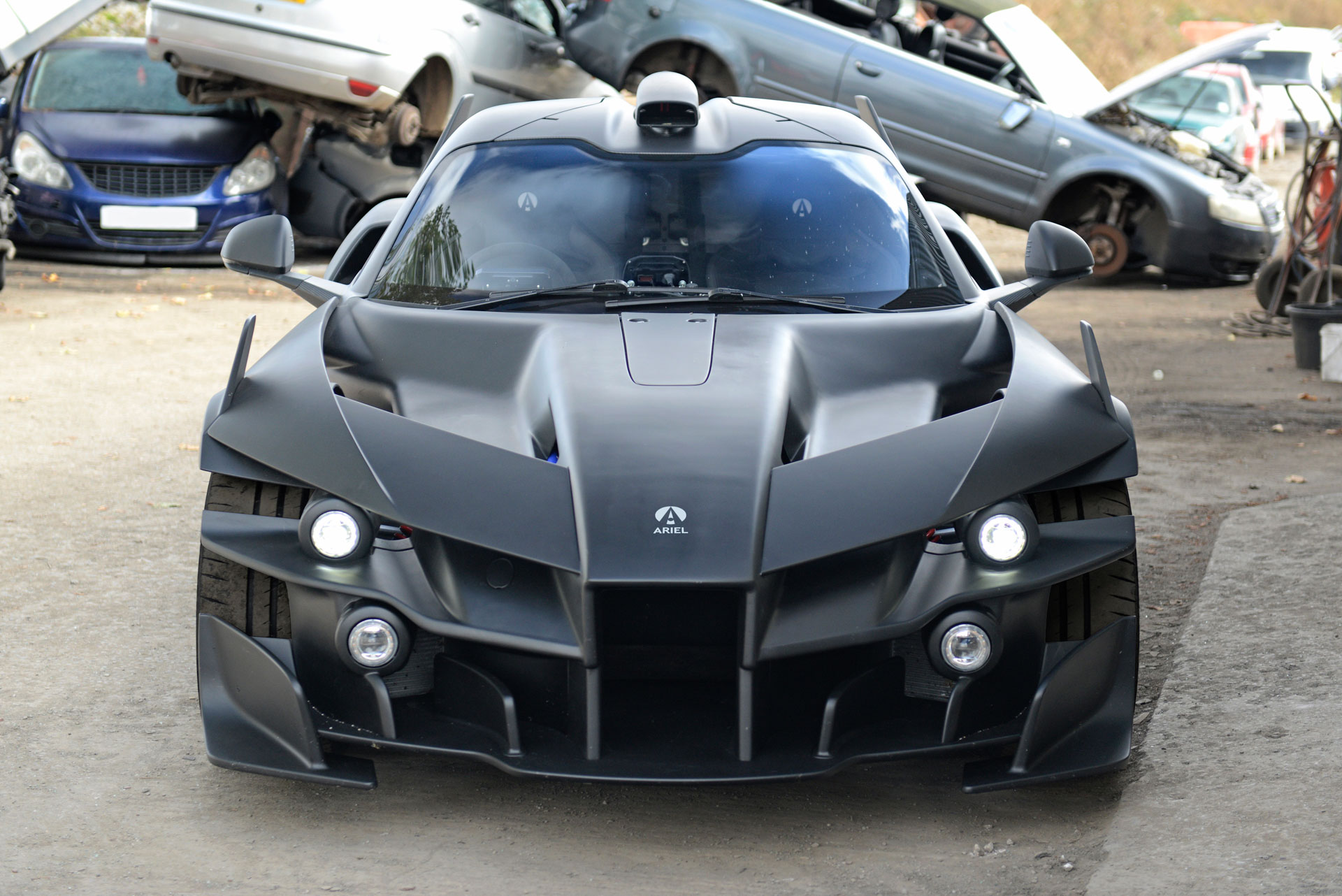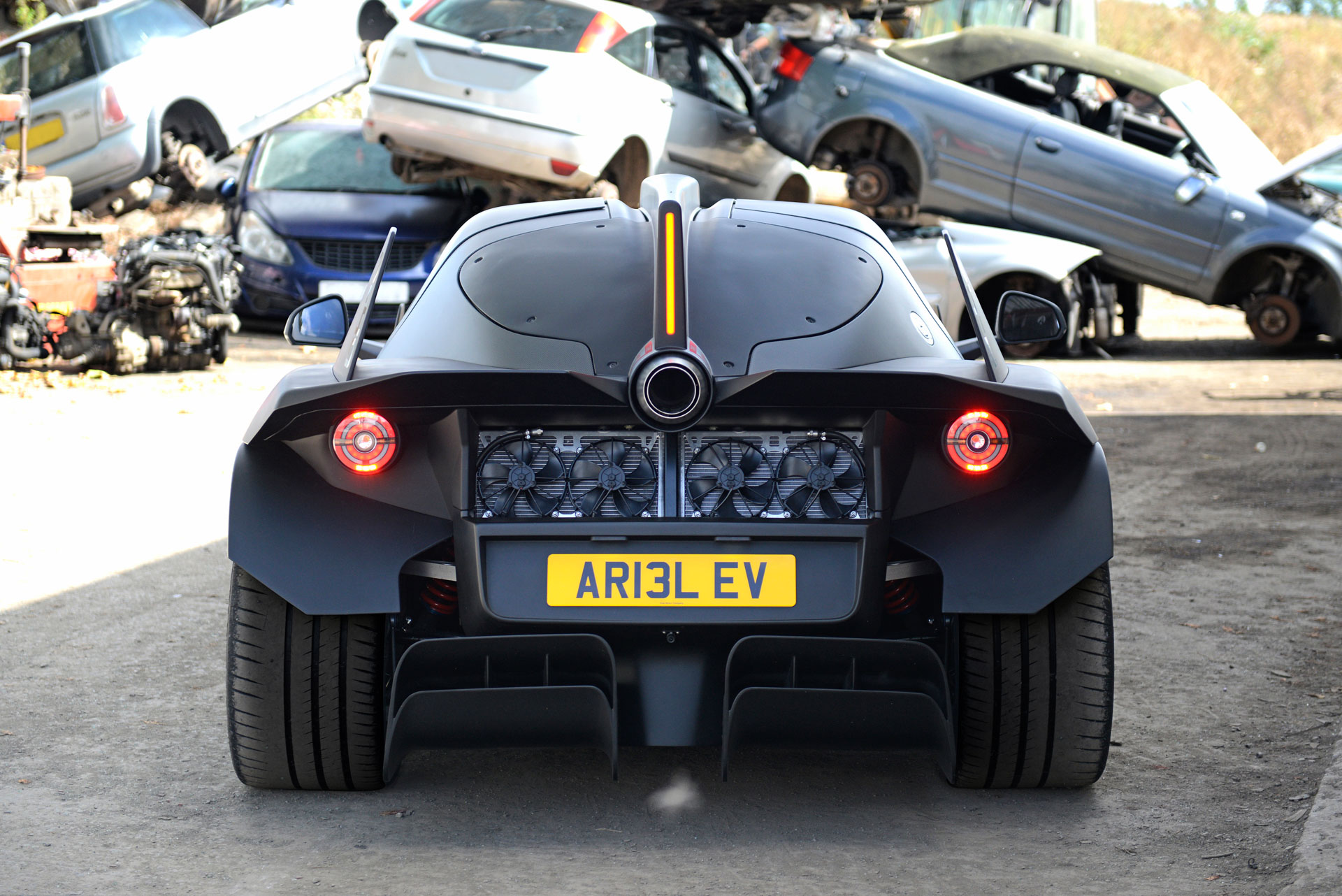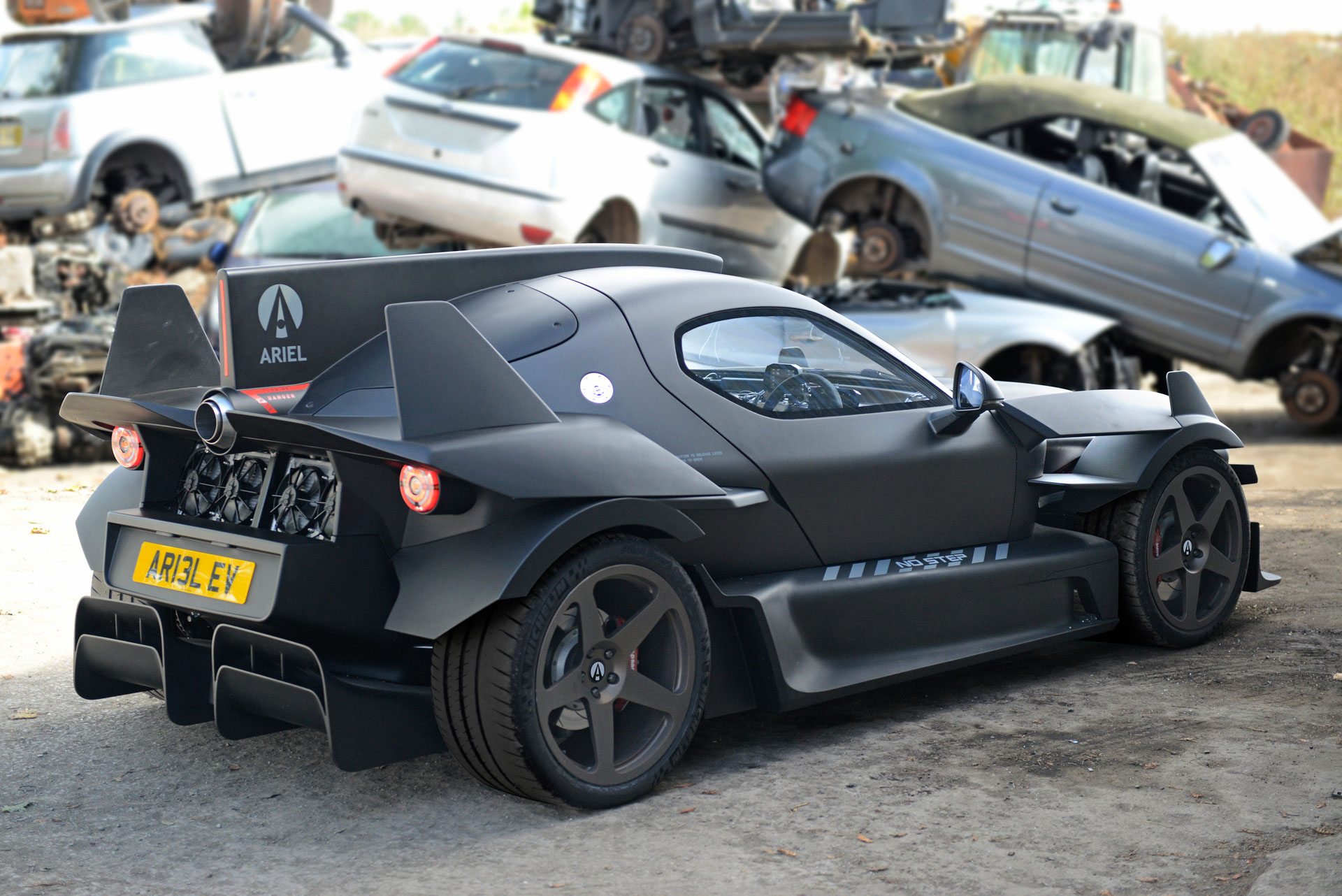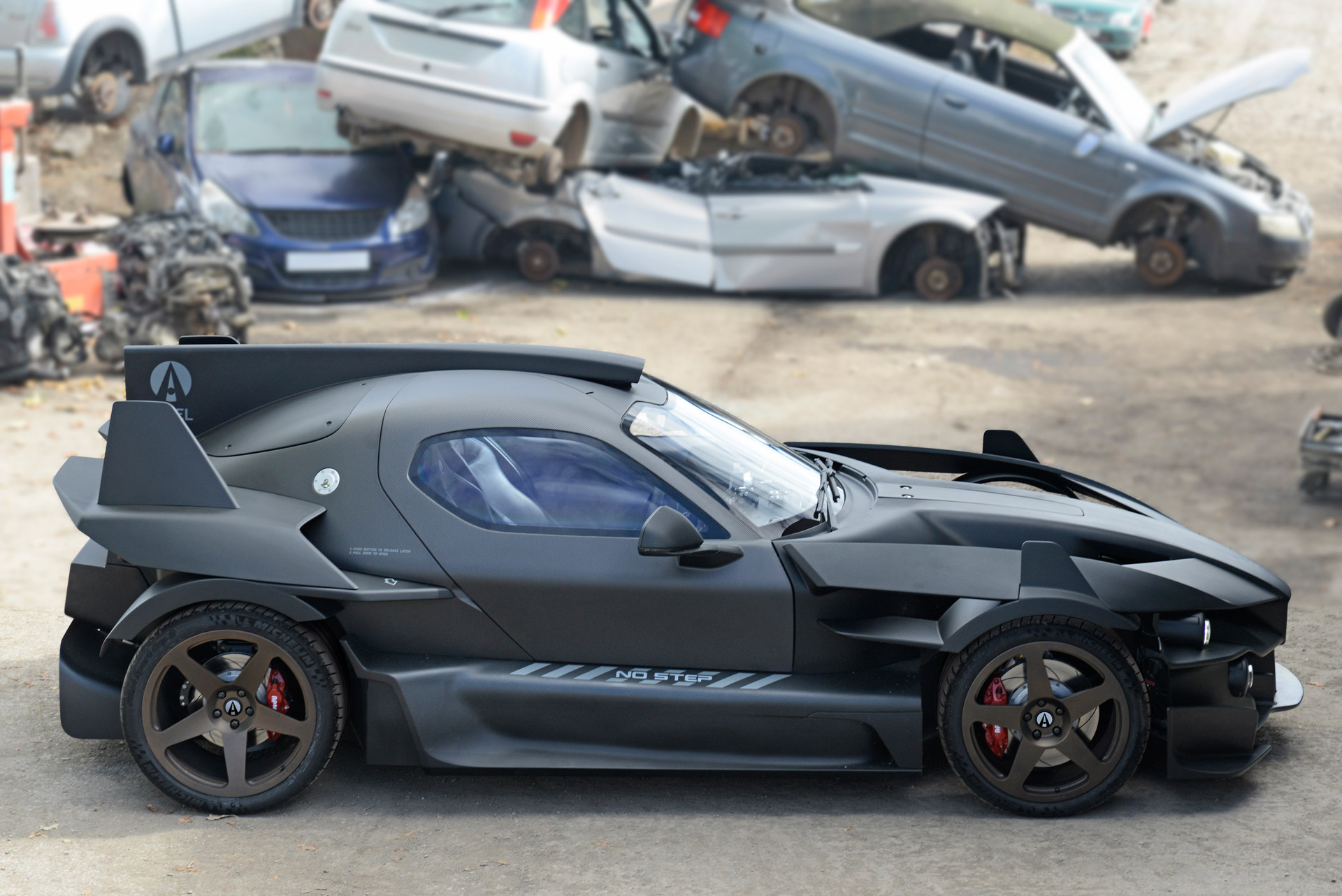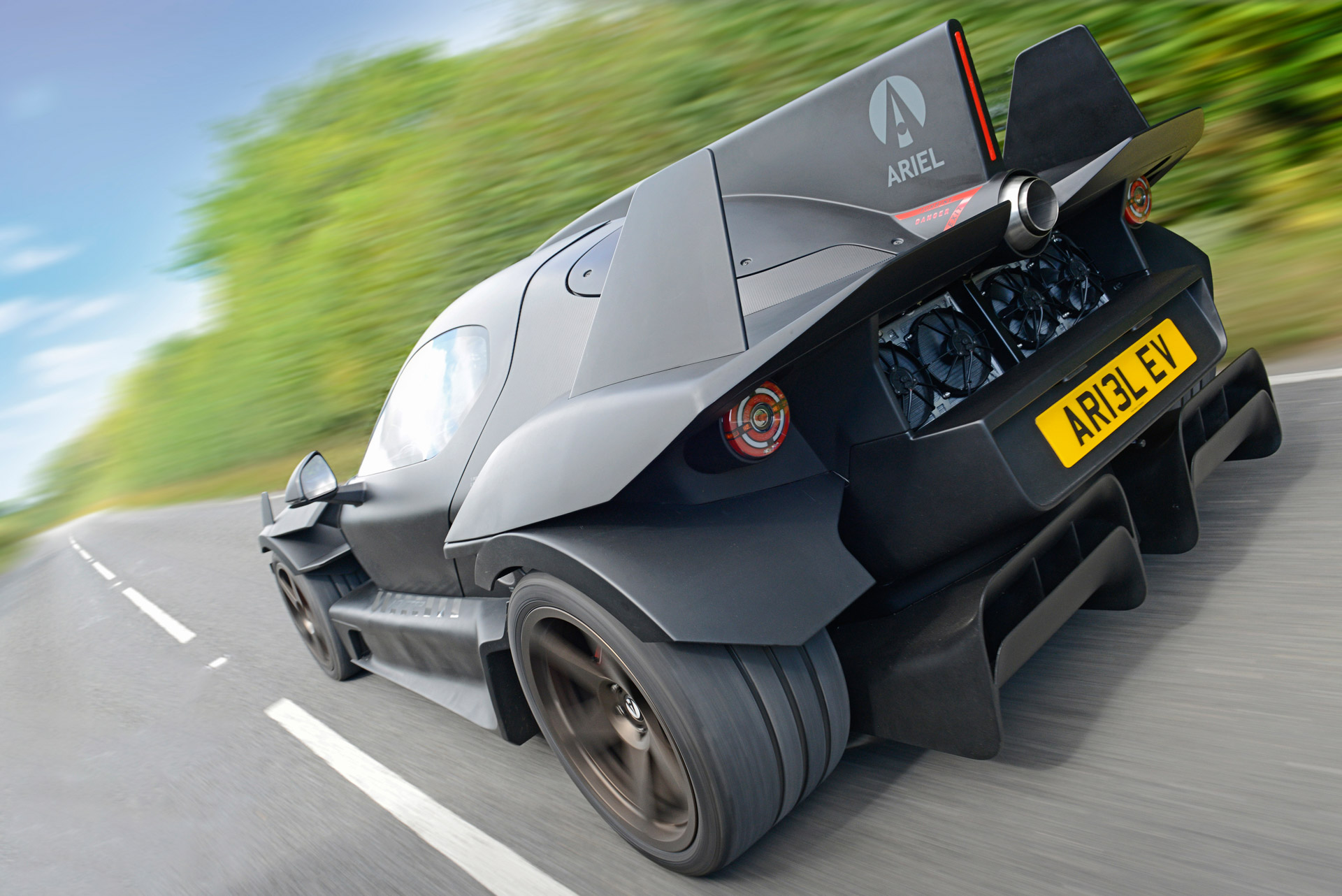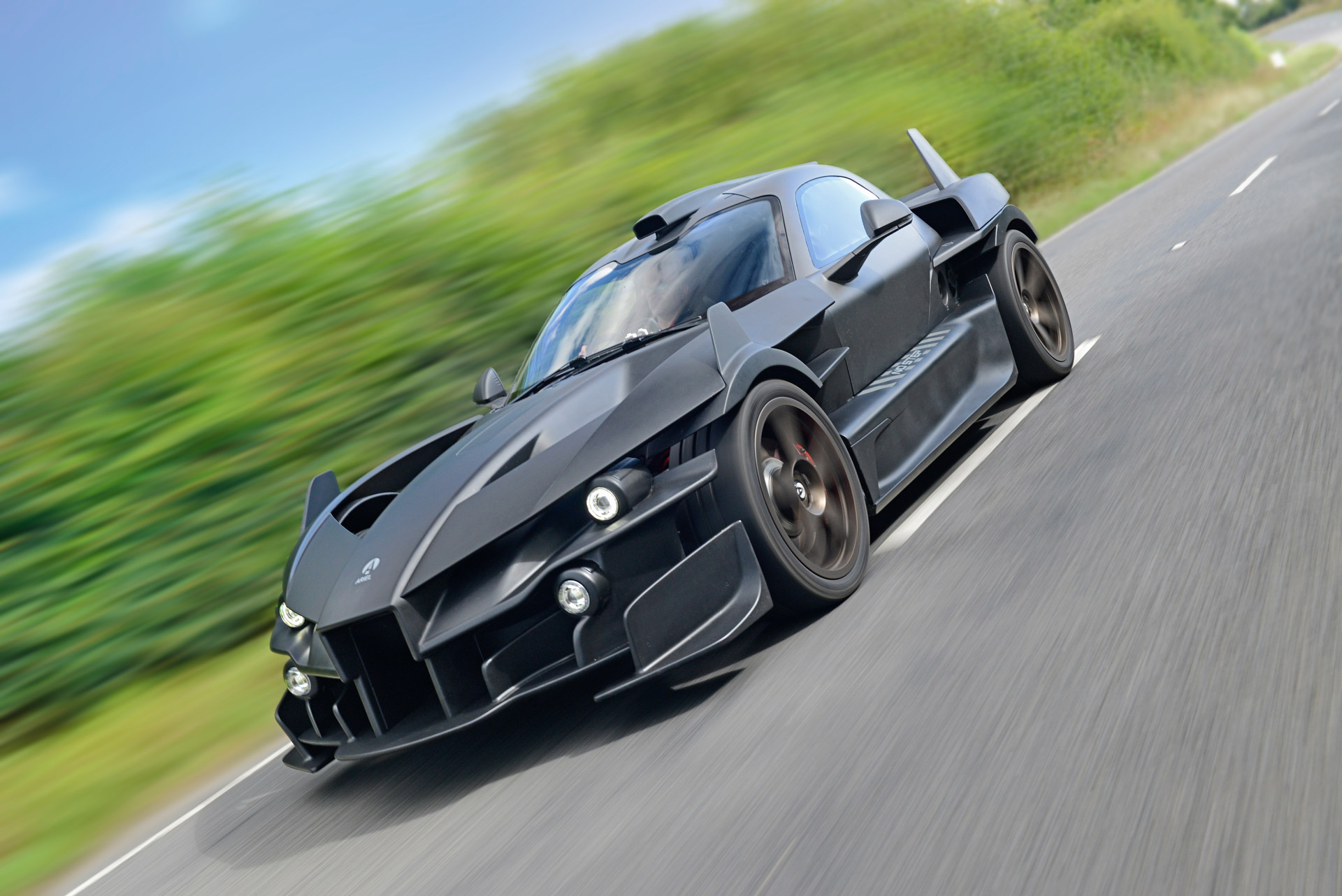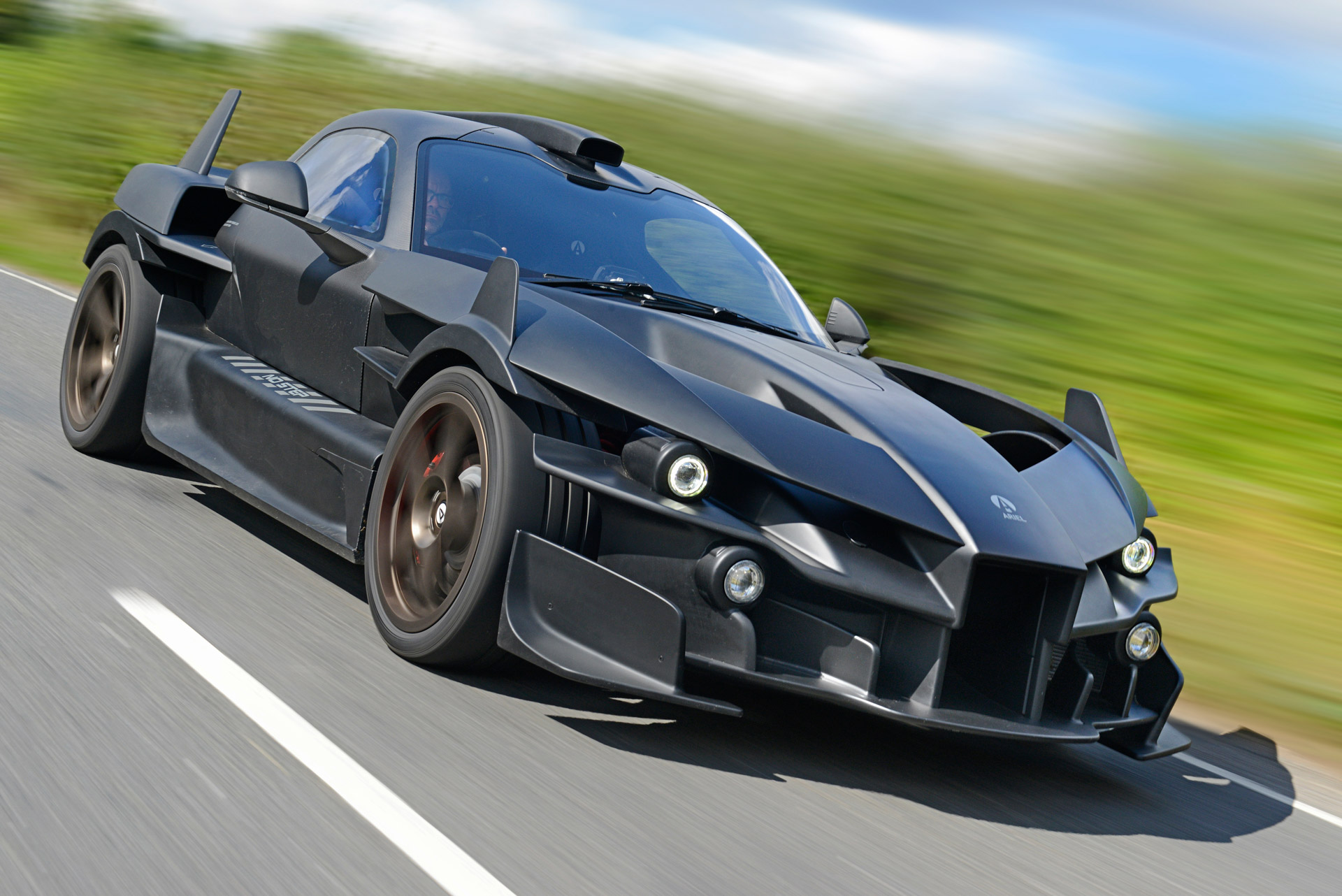This is the Ariel Hipercar, the latest toy from the British sports car company behind the Atom trackday weapon and its Nomad off-road brother, and a vehicle that makes even those two seem vaguely sensible.
Called the Hipercar, though it will get a new name for production, this is Ariel’s first coupe and will be its first fully homologated car when it goes on sale around 18 months from now. But don’t go getting the idea that this is an Atom with a set of doors and a roof, because the reality is much wilder. How wild? Try almost 1,200 hp (1,217 PS) of electric muscle, zero to 100 mph (161 km/h) in just 4.4 seconds, and a gas turbine strapped behind the seats.
Instead of the Atom’s spaceframe chassis, there’s a bonded aluminum tub with detachable subframes and a carbon fiber body structure with butterfly doors. And that bodywork has so many interesting aero add-ons including three vertical fins on the rear end and a multitude of surfaces on the nose that it’s difficult to actually get an idea of the Hipercar’s basic shape.
But what really sets it apart from Ariel’s other cars is what’s going on under the skin. Ariel has had a long association with Honda powertrains in both naturally-aspirated and supercharged forms and even built its own V8 for a while. But for the Hipercar it moves into the electric age.
Related: Ariel Atom 4 Is Faster Than The Bugatti Veyron SS At Top Gear’s Test Track
Each of the four wheels is driven by its own in-board electric motor, each one of those delivering 285 hp (220 kW / 299 PS) and 332 lb-ft (450 Nm). To save you the math that equates to a total of 1,185 hp (1,192 PS) and 1,327 lb-ft (1,800 Nm), which is enough to send the Hipercar to 60 mph (97 km/h) in 2.09 seconds, and accelerate it between 60-120 mph ( 97-193 km/h) in only 3.51 seconds, roughly the time a Bugatti Chiron takes to bridge the same speeds.
Fortunately, the Hipercar features an adjustable traction control system and sticky Michelin Pilot Sport Cup 2 tires, with the options of even gripper 2R rubber, to help manage all that energy. But if the idea of marshaling 1,185 horses sounds a little too frenzied there’s also the option of a two-wheel drive model that generates a more modest 590 hp (440 kW / 598 PS) and 664 lb-ft (900 Nm).
The Hipercar draws its power from an 800-volt, 62 kWh battery that is good for 150 miles (241 km) of WLTP range, though that’s not the true range, because you need to factor in the optional Cosworth micro-turbine range extender. Weighing less than 110 lbs (50 kg) and generating 47 hp (35 kW / 48 PS), it is smaller and lighter than any combustion-engined alternative, says Ariel, and will eventually be able to run on hydrogen, for full zero-emissions driving.
If there’s a downside to all this new-fangled technology, which includes power-assisted steering and even air conditioning, it’s the weight. An Atom weighs just 1,312 lbs (595 kg), but Ariel says the Hipercar comes in at 3,408 lbs (1,546 kg) in all-wheel drive form. The sheer power of the electric drivetrain more than compensates when it comes to acceleration, but a 260 percent increase in curb weight means this is going to feel very different to an Atom when it comes to turning and braking.
Ariel says the Hipercar will be homologated in Europe and Australia, but it looks like North America might miss out. As for prices, the company isn’t revealing specific figures but told Autocar that it should cost less than £1 million ($840k), meaning it’s not just the performance that is supercar-sized.




